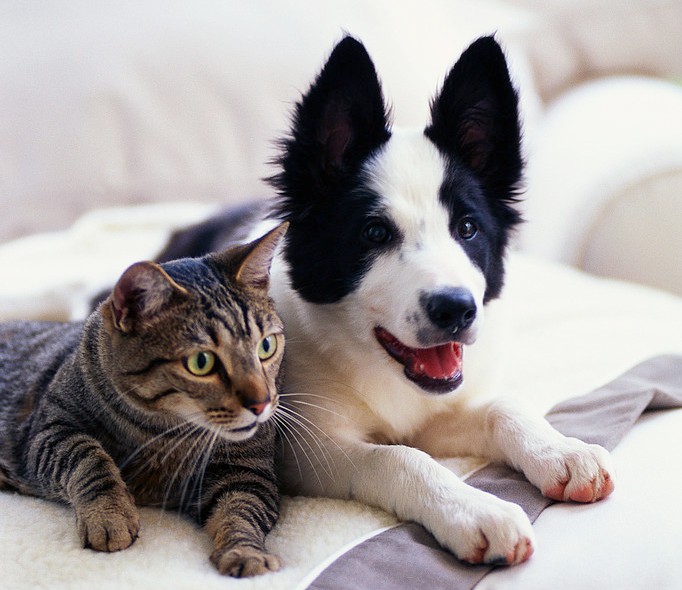When we as pet parents feed our pets leftovers from the table, the ‘leftovers’ are often a couple of pieces of steak or a few bites of broccoli. People food – people quality food. But when commercial pet food utilizes the leftover theme, an entirely different leftover is provided to pets. Here is information on a little thought of commercial leftover commonly used in pet foods and treats; second clear flour.
Just as there are classifications or grades of meat, there are grades of flour. The flour you purchase in the grocery to make cookies or cakes is known as ‘straight flour’. Below is a definition of straight flour provided by TheArtisan.net – a cooking website…
Straight flour is considered a good flour to use for bread making. It is 100 percent extraction flour. The extraction rate is the amount of flour obtained from wheat after milling, when the bran and germ are removed, leaving the endosperm, which contains most of the protein and carbohydrates. For example, based on 100 pounds of wheat, approximately 72 pounds of flour remains after extraction; the other 28 pounds is used for feed. The entire 72 pounds or 100 percent, of the remaining flour is straight flour. Straight flour is used to make patent, clear, and low-grade flours.
But then there is pet food flour. On the Cargill.com website (Cargill manufactures several brands of pet food and provides ingredients to the pet food industry – such as flour), we find the following ingredients as ‘products’ provided by their mill, along with descriptions of the Cargill Horizon Mill products…
Second Clear Flour
Pet food, food products, animal feed, plywood industry, vital wheat gluten.
Durum Second Clear
Pet food, rodent control.
Notice that with both of these products, the title of the flour product includes the word ‘second’ and both include a pet food use and a non-pet food industrial use.
So what is ‘second clear flour’? Commercial/Industrial leftovers. As defined by TheArtisan.net…(bold added)
Clear flour is the by-product of straight flour that remains after patent flour is removed. Clear flour is graded into fancy, first clear, and second clear. Clear flour is darker in color than the other flours previously mentioned, as it is made from the part of the endosperm closest to the bran. Fancy clear flour, milled from soft wheat, is used to make pastry flour. First clear, milled from hard wheat, is often blended by the baker with low-gluten flours to lighten the texture of breads such as rye or whole-wheat yet maintain the deep color desirable in such breads. Second clear flour has a very high ash content, is very dark, and is not generally used for food.
It is as if someone, somewhere along the line said…’what do we have that needs to be thrown away? Let’s make pet food out of it instead.’ Selling by-products and seconds have become a multi-billion dollar a year industry world-wide.
Industry has taken giving the dog or cat leftovers from the family table to an entirely different level. But, significantly, they (pet food) don’t tell us they are using industrial leftovers to make pet foods. Pet food labels don’t state ‘second clear flour’ or clearly list additional otherwise waste ingredients in the ingredient panel. We have to guess or hope that a Customer Service Representative will be honest and provide us with information. To make it even more confusing and challenging for discriminating pet parents, one pet food stating wheat flour on the label might contain a human grade/quality of flour while the very next pet food on the shelf could contain the bottom of the barrel grade second clear flour. The pet food/pet treat labels read exactly the same.
Second clear flour isn’t that significant on its own; however, the general pet food industry mindset of ‘seconds’ being passed down into pet food has. Combine sixty plus ‘seconds’ together, toss in some vitamins and minerals to make it a balanced meal, and presto – you’ve got a commercial pet food millions are trusting to provide nutrition to their beloved pet. While it might be a nutritionally balanced meal, industrial leftovers is not nutrition.
Wishing you and your pet(s) the best,
Susan Thixton
Pet Food Safety Advocate
Author, Buyer Beware
Co-Author Dinner PAWsible
TruthaboutPetFood.com
PetsumerReport.com
What’s in Your Pet’s Food?
Is your dog or cat eating risk ingredients? Chinese imports? Petsumer Report tells the ‘rest of the story’ on over 2500 cat foods, dog foods, and pet treats. 30 Day Satisfaction Guarantee. www.PetsumerReport.com
Have you read Buyer Beware? Click Here
Cooking for pets made easy, Dinner PAWsible
Are you subscribed to Truth About Pet Food Newsletter? Click Here to subscribe
Follow Truth about Pet Food on Twitter
Become a Fan of Truth about Pet Food, Dinner PAWsible, Buyer Beware on Facebook
Find Healthy Pet Foods in Your Area Click Here




































